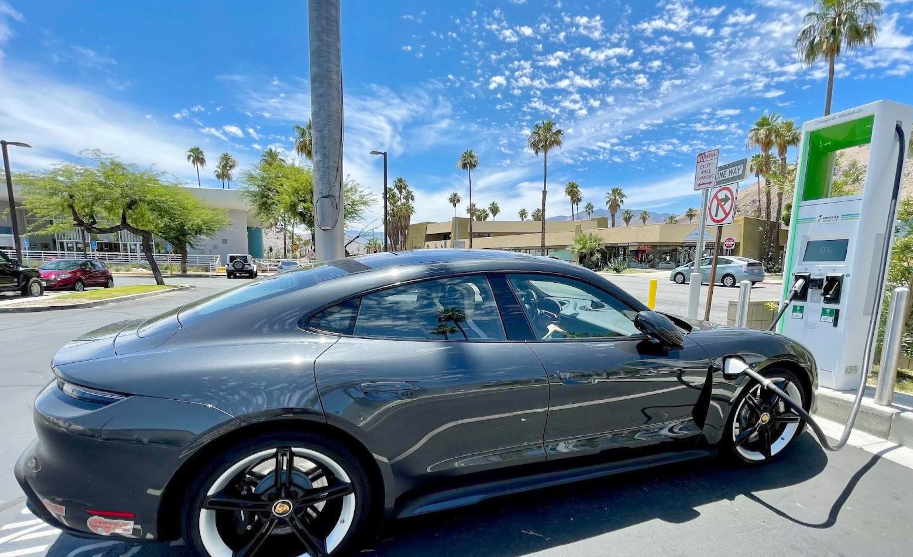
August 11, 2023
3 Ways the Dealer of Today Can Serve Tomorrow’s EV Buyers
Despite facing plenty of evolving challenges over the last few years, the automotive industry has always managed to keep its eyes on the future.
According to S&P Global Mobility, by 2030, more than 25% of new passenger cars sold will be electric vehicles, as OEMs continue to embrace zero-emission vehicles. These top automakers are projected to contribute over 70% of global EV production by 2030, a significant increase from the 10% they represented in 2022.
With this momentous shift already visible over the horizon, auto dealers need to balance helping today’s buyers and preparing their dealership for future electric vehicle sales – including important training for their sales, service and F&I departments.
In this blog post, we’ll examine the three ways dealers of today can prepare to serve tomorrow’s EV buyers, including:
● Planning ahead, especially for infrastructure
● Training your team for the future
● Establishing credibility with these new kinds of customers
Plan Ahead, Especially for Dealership Infrastructure
To support future electric vehicle sales, dealers will need to make significant, costly updates to their lot, showroom and service bays including charging stations to cater to potential EV customers.
However, OEMs are establishing the prescriptive requirements based on sales opportunity for each dealer and while the cost of some of the updates may be high, they are straightforward and easy to plan for. OEM subsidies and investment funds from co-op programs can help ease this transition for many dealers.
Transition is the key word – ICE sales won’t be replaced by EVs overnight and consumer adoption will be different region-to-region. To ensure they’re evolving their dealership sales model at an appropriate pace, it’s important for dealers to listen to their customers, ensuring their inventory and offerings reflect their customers’ evolving buying preferences.
Train Your Team for the Future
While the transition from ICE to EV sales will be slower at some dealerships than others, it’s important every dealer recognizes the long-term importance of dealership sales training to develop EV expertise. OEMs will likely prioritize EV training requirements coinciding with vehicle launches, while also rolling out continuous learning opportunities, but this training isn’t just for dealership sales staff.
EV training is also an investment in your team’s adaptability. Customers will undoubtedly have questions about things like range, charging infrastructure and incentives – even if they aren’t ready to make the switch to an EV. It’s important every member of your team can speak confidently to these questions, even if that means connecting customers to relevant resources or other key team members.
Some dealers are scaling their approach by appointing a designated “EV Expert” – a highly knowledgeable member of the staff that can help buyers navigate and take advantage of all the federal, state, local and utility EV incentives available.
When considering EV training for your staff, it’s not just about product knowledge. EV sales training should focus on cultivating a customer-centric approach by understanding customer motivations for considering EVs, addressing common misconceptions and highlighting the benefits of EV ownership. Instilling these skills helps your team be better prepared to serve the diverse needs of tomorrow’s EV buyers.
Opportunities for Dealers who Proactively Embrace EV Sales
Even with this projected growth, by 2030 the average dealer is projected by S&P to have a new vehicle sales mix of 70% internal combustion engines (ICE) and 30% EVs. However, this shift will have a marked impact on the auto finance industry as S&P Global Mobility finds the average credit scores for EV buyers, both mainstream and luxury, are greater than all ICE buyers.
How Can Dealers Ensure Future Success?

While the projected pace of EV growth will vary based on factors including brand and market, the challenges and opportunities presented to dealers will be the same. Dealers who are proactive in establishing a customer-centric approach will be in the best position to serve this growing segment.
Having team members who can confidently and quickly answer buyer questions and provide accurate information enables dealers to build confidence with customers preparing to make the switch – and compete with EV-only startups who only specialize in educating customers about electric vehicle sales.
In a recent industry study, major EV-only brands including Tesla, Lucid, Polestar and Rivian were ranked behind other premium brands in customer service. The challenges experienced by EV-only brands With EV-only brands struggling with responsiveness and poor customer service, dealers are being presented with an opportunity to capture future market share – if they embrace EV sales and proactively build credibility with customers today.
Establish Credibility with Current & Future EV Buyers
While the types of vehicles buyers are shopping for may be changing, the reasons they choose a dealership have remained largely the same: trust and credibility.
Building credibility with both current and future EV buyers is a strategic move that can set dealerships apart and drive long-term success. When communicating with buyers about EVs, it’s important dealers establish credibility to build trust with buyers by personalizing their approach.
As EVs become a more common choice for buyers, dealerships that show a real understanding of EV technology, incentives and environmental benefits can establish themselves as trusted advisors. Offering accurate and up-to-date information helps dealerships create an environment where customers feel confident and well-informed when making the change to an EV.
Proactively building credibility with current and prospective EV buyers is a great way for dealerships to maintain a loyal customer base – and bring in new customers through positive word-of-mouth.
With consumers’ reasons for adoption varying from person-to-person, it’s important for dealers to take a data-driven approach to identifying and engaging potential and future EV customers. Using dealership marketing technology, dealers can assess the factors motivating a buyer’s purchase decisions to tailor their messaging. For example, including early trade-in offers, OEM incentives, tax credits or new electric models available for pre-order could be motivators to drive strategy.
—
While consumer adoption of EVs will differ from dealership-to-dealership, dictated by their region, OEM and local market, the automotive industry’s electric future is approaching – and gaining speed.
To accelerate their return on investment, maintain pace with the rest of the industry – and remain step ahead of the competition – dealers need to ensure they’re planning ahead in order to serve future EV buyers.
Interested in learning how Mastermind can help your dealership embrace future EV sales opportunities? Request a free demo.


